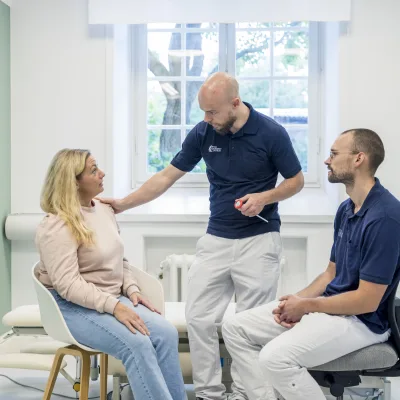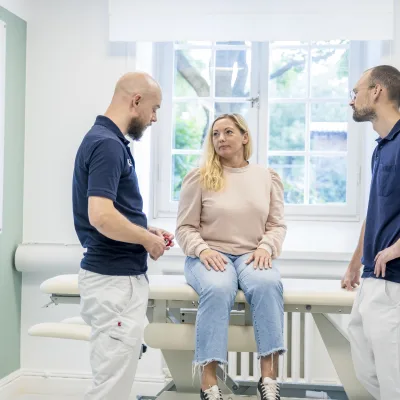Neck
The neck or cervical spine forms the upper part of the spine and is crucial for the mobility and stability of the head. Common conditions in the cervical spine include herniated discs, spinal canal stenosis, and cervical myelopathy. Symptoms in the arms, such as reduced strength, numbness, sensory loss, nerve pain radiating to one or both arms or shoulders, may occur. Neck pain is often not the primary symptom.

Cervical Disc Herniation / Spinal Canal Stenosis
The symptoms can vary. The most common is a pain that radiates out into the shoulder and upper arm, sometimes all the way to the hand. A tingling sensation is also common, and sometimes numbness in the arm can occur. Just like in the lower back, there are discs between the vertebrae in the cervical spine. Before the age of 20, the discs are elastic and stretchable, but over the years, the water content gradually decreases and cracks can form in the disc's capsule (disc degeneration/age-related changes). In this cracking, parts of the disc's nucleus can protrude as a herniation.

Cervical Myelopathy
Pain is rarely the primary reason for seeking medical care. Often, the symptoms are quite non-specific and elusive in the beginning. In most cases, symptoms develop gradually over a long period, which means that people don't always seek care immediately. Cervical myelopathy is a condition where the spinal cord is affected in the cervical spine. It is usually caused by the spinal cord being compressed due to age-related changes in tissues and bones. Sometimes large disc herniations in the cervical spine can affect the spinal cord, but this is more uncommon. Myelopathy primarily affects the older half of the population.